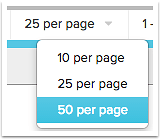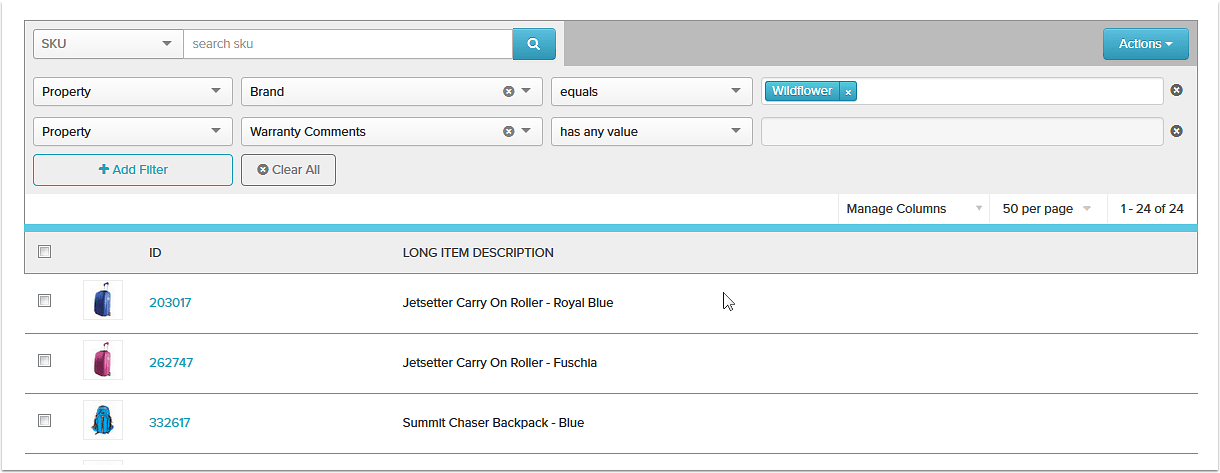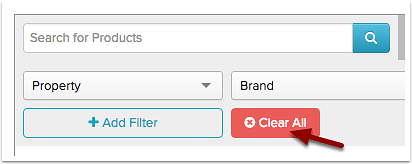You can search for products in two ways: the search bar at the top of the page, and through the search bar on the product index page. In this article, we'll discuss using product search and filter on the product index page.

Using Product Search & Filter on the Product Index Page
The product search and filter bar allows you to do a simple search, or you can apply filters to narrow your results to a very granular set of products.
With simple search, just type in a partial word, word or phrase in the Item Number or Long Item Description and all products matching your search will be returned. It's a quick way to find a single SKU - just start typing the name or SKU number of the product.
You can also apply filters to your product list, allowing you to narrow your results to a very specific set of products you want to view, either by SKU or by SKU Group.
Simple product search can also be combined with a filter set to return a subset of your simple result. When you have the specific set of products you want, you can save your results to a smart or simple list to reuse, and use in other parts of the app.
Simple Product Search
Simple product search can be useful in cases where you're searching for a specific set of products that has more search results than the top search bar will return. Where the top search bar returns the first five results, the simple search bar will return everything that matches your search. By default, search works with Long Item Description and Item Number . In this example, a search for "set" results in only the products with set in their name, but the full 11 results that match.

To perform a simple product search:
- Choose which type of records you want to search for, SKU Group or SKU, from the dropdown menu. In most cases, you'll be working with the entire SKU Group, so it is the default option. The view in simple product search shows either SKU Groups or individual SKUs. Be sure that the view you select matches the product type you're reviewing. For example, if you are viewing a list that contains SKU Groups and your view mode is SKU, the list will appear empty. Changing the view to match SKU Group will show the items in your list.
- Type what you want to search for in the product search box.
- Press Enter on your keyboard or click the magnifying glass at the end of the search bar.
- The number of products that meet your criteria will be shown on the right side.

- You can use the results per page dropdown to expand or limit the number of results that appear on the page.

- To clear your search result, click the
 at the end of the search bar.
at the end of the search bar.
Filtered Product Search
Filtered product search lets you combine factors that products you're looking for have in common to narrow your result to a very specific product set that you can use once, or save to a smart or simple list and use throughout Salsify. Filter products directly on the product index page with the same powerful filters you use to build lists.
To filter on the product index page:
- Click Add Filter next to the product search bar.

- Choose the criteria you want to narrow your results to. As you make filtering choices, products matching your criteria will automatically be narrowed as they do with simple search.

- To change your filter:
- To add additional filters, choose Add Filter and add another filter.


- To remove a filter, click the x at the end of the filter line or the part of the filter you want to change.

- To clear all filters and start over, click Clear All and your selections will be reset.

- To add additional filters, choose Add Filter and add another filter.
Save Filtered Product Search
When you have a set of filters you want to save, you can save it to a list. To save your filtered results to a list, choose the Actions menu, then pick Add All Products to a List. You can add them to a new smart list, a new simple list, or to an existing simple list. If you add products to a simple list, your filters will not be retained; the products you chose will be added to the list.
Click here to learn more about lists.

